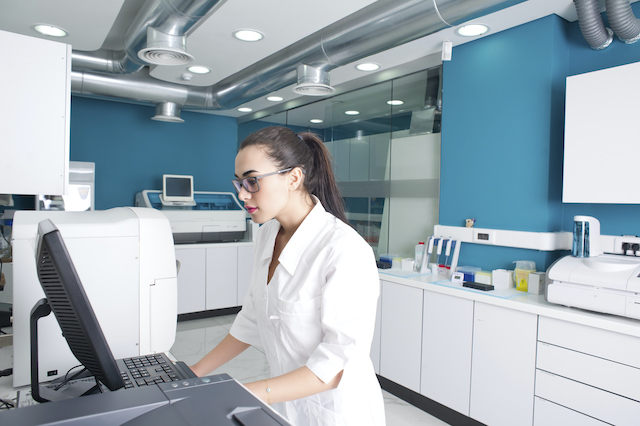
Correct sample preparation ensures consistent results, can help reduce errors and provides the reliability of any tests.
During moisture analysis in your lab, samples are often processed before they are heated in order to dry out evenly, help prevent burns and get accurate measurements. Correct sample preparation ensures consistent results, can help reduce errors and provides the reliability of any tests. While basic mass measurements don’t require as much preparation since samples are not heated, there are some guidelines that can be useful when weighing samples on semi-micro or analytical balances since they are very sensitive instruments. Read on for some common steps that should be replicated carefully during sample preparation.
Use Airtight Containers
Before measuring out your samples, make sure that they are stored in airtight containers in a room with a controlled temperature. A few samples are volatile or change a bit when exposed to cold, heat, light, humidity, or other factors.
Clean Lab Equipment
Make sure that the containers, tools, and lab equipment that you are using are all clean. Ensuring that these pieces of equipment are sterile will ensure that your moisture analysis is not contaminated. If any outside bacteria reaches your current experiment sample through a dirty pipette or balance, then your results might be ruined from the very start. Make it a focal point in your lab preparation to clean everything thoroughly before and after experimenting.
From here, make sure to tare the container you’ll be using to hold the sample, including any glass fiber pads.
Measure Samples
Measure the sample size that you have to analyze. A few industries require that a sample weighs a specific amount for testing. For example, a kind of cheese could be needed to be tested three times with a chunk of 25g for standard testing. Then, record the weight.
Process the Sample as Needed
A few samples have to be ground up into powders or paste in order to be analyzed correctly. Make sure that the samples aren’t cooled or heated during the entire process, and as mentioned earlier, avoid contamination by using smooth and clean tools. The paste or powder has to be okay with even consistency. If liquid, the samples have to be mixed evenly and without any bubbles.
Distribute Samples Evenly
Make sure to distribute these samples evenly and thinly onto your sample pad (if solid) or spread onto the glass fiber pad (if liquid or paste). Doing so will ensure a consistent drying process and avoid any burns and uneven heating too. Use a spatula for any solids and pastes or a pipette for liquids. Do not handle the sample without tools to avoid possible contamination.
From here, follow standard drying and heating procedures for the material being tested in order to ensure the tests don’t damage the samples.
FOR ALL LAB EQUIPMENT AND LAB NEEDS, CONTACT LAB PEOPLE TODAY
The Lab People Inc. is a trusted provider of laboratory equipment, services, supplies, and rental equipment for you and your laboratory. As an ISO 17025 accredited service organization, we stand behind our services with 100% satisfaction guaranteed for all of our customers. We are here to provide you with the best lab equipment service, equipment, and supplies.
For more information about how we can assist you, visit our website, email us, or give us a call at 1-800-296-2001!
Do not forget to follow us on Facebook, Twitter, and Linkedin!
